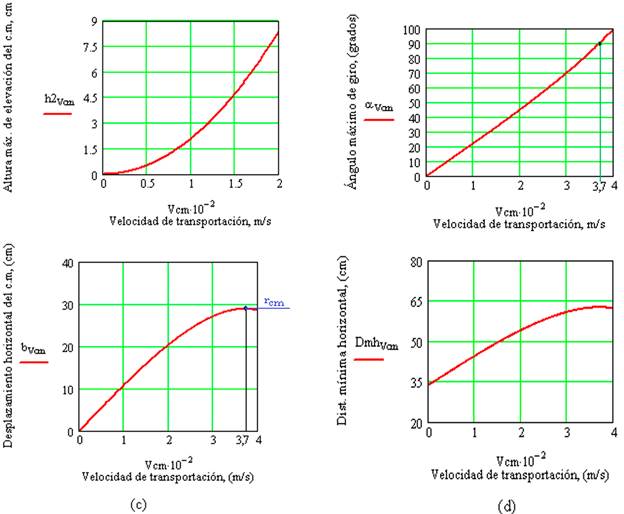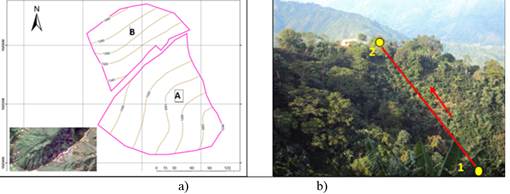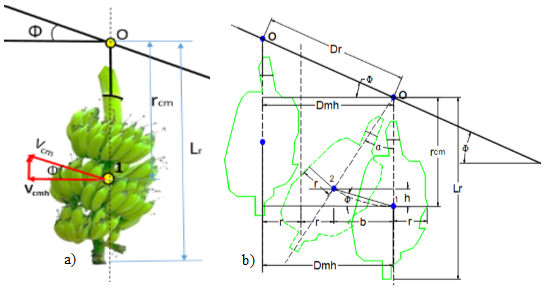INTRODUCTION
The plane-tree (Musa paradisiaca) and banana (Musa cavendish) commonly called banana, are native to the tropical areas of Southeast Asia (Nava, 1997; Sena-Reino Unido, 2004). Banana is a tropical fruit of great international demand, both, for its fresh consumption and for its use in the elaboration of multiple dishes of traditional cuisine. In 2012, the global banana export volume reached a record of 16.5 million tons, 1.1 million tons (7.3%) higher than the value reached in 2011 (FAO, 2014).
The largest exporters of banana in volumes are Ecuador, the Philippines, Guatemala, Costa Rica, Colombia and Honduras. In 2012, Ecuador contributed 26.6% (5 205 353 tons) of all the exported bananas in the world, followed by the Philippines with 13.5% and Guatemala with 10.4%. Colombia and Costa Rica are constantly in fourth and fifth places. The main banana producers in the world are India, China, the Philippines, Ecuador and Brazil. Only India, in 2012, produced 24.8 million tons of banana, followed by China, which produced 10.5 million tons. In third place is the Philippines with 9.2 million and fourth Ecuador with 7 million tons. Brazil already registers a production of 6.9 million tons for what occupies the fifth (Vinicio, 2007)
The geographical location gives Venezuela potential for tropical agriculture, being able to obtain high yields in permanent crops such as coffee, cocoa, oil palm and fruit trees, or semi-permanent crops such as sugarcane, banana, plane-tree and cassava (FAO, 2009).
The cultivation of bananas and plane-tree in Venezuela represents the largest fruit activity in the country with 459,000 tons in 2013. The production is distributed in different parts of the national territory in relation to the adaptive degree of the cultivar (Martínez, 2009a). The areas with the highest banana production are in the states of Aragua, Carabobo, Trujillo, Mérida, Barinas and Yaracuy. Figures from the agricultural census (May 2007/April 2008) indicate that Mérida State is the largest producer, followed by Trujillo with a production of 144,000 t (Martínez, 2009b).
The main banana area of Trujillo state is devoted to monocultures for export; this is located in the alluvial plain of river Motatán. According to figures from the Agricultural Census, it represents 15.75% of the production and, 84.25% of that, corresponds to the middle and high zone of the state, where there is a tradition of agroecological banana production, generally associated with coffee and citrus. The main producing municipalities are Monte Carmelo, Boconó, Trujillo, Escuque and San Rafael de Carvajal.
Ramírez Céspedes et al. (2010) & Lescot (2013) point out that the highland banana presents ideal quality characteristics for commercialization. However, the condition of poor agronomic management and transfer during harvest provoke that the aesthetic quality of the fruit is not the most appropriate (Orro et al., 2003).
Bananas grown under the modality of employer and family farm are harvested manually by one or two people, in order to prevent clusters from falling to the ground and damaging the price and the final quality of the product. In the study area, banana plantations are established at an altitude of 1 300 meters above sea level and on land with steep slopes (IGVSB, 1999), which greatly complicates the transfer work in the banana harvest. The harvest is one of the last operations of the cultivation of bananas and, at the same time, a key point to obtain the fruit of the desired quality in the market. The hauling of bunches of bananas from the plantation to the point where it is prepared for transport to the markets, is normally done in a manual way (on the shoulder) and on animals (mules and donkeys), according to Magalhães et al.(2004). They also state that the manual transport of banana bunches, within the plots, causes physical damage to fruits that compromise their quality. These damages are usually caused by falling and crushing.
Not all countries have systems for handling and transporting freshly harvested agricultural products, from planting to packing or shipping plants. The system cable via (transport by aerial cable) of the plantation is as important as the system of irrigation and drainages of the plantation, since the transport and the quality of the fruit depends on it. This method is undoubtedly the most efficient and economical way of transporting fruit in banana plantations that has been developed, according to Soto (2008).
In the world, different cable transport technologies have been developed and constructed like monorail and wagon, among others, whose design depends on the type of product to be transported (flowers, bananas, palm, citrus, or others), topographic conditions, crop size, times and movements, main and secondary drainages, existing roads and paths, experience, suggestions and requirements of the crop or product. Companies such as Analpes LTDA, Prezi and others, have been pioneers in the development of these technologies (Patiño-Valencia et al., 1994; Orozco-Santos et al., 2008; Fontanilla & Castiblanco, 2009).
A large part of the development, in terms of field technology and post-harvest of banana, are produced by the large banana companies and, consequently, results are almost never published (Vinicio, 2004). In Venezuela, precisely, the small producers of the middle and high zones do not have at their disposal technologies for the management of the harvest and post-harvest of banana. This means that, through the appropriate design of a cableway system, it is possible to avoid the deterioration of the product before it reaches the transportation point and improve the efficiency in harvesting operations, but according to the investigations related to the transportation systems, they have not been carried out with scientific foundations. Therefore, different design parameters such as speed, distance between racemes, the number of racemes, among others, have been taken without the proper selection criteria. Similarly has happened with the physical and mechanical properties of the product to be transported (raceme, cluster, bananas, plane-tree, etc.)
Taking these aspects into account, the objective of this work is to determine the design parameters of a system for the transportation of banana bunches (Musa cavendish L.) on hillsides, through a theoretical model for its application in mountainous areas of Trujillo State in Venezuela, to establish the bases for its design and construction and, thus, facilitating the management conditions needed for a quality fruit harvesting.
METHODS
Characterization of the Experimental Zone
The zone under study is located in the hamlet Alto de la Cruz, Carvajal Parish, San Rafael de Carvajal Municipality, Trujillo State in Venezuela. The physical and mechanical properties of banana racemes were previously determined experimentally according to Suarez et al. (2014) as input data of the theoretical model developed and the samples were obtained from four harvests of Cavendish variety of banana for the months of November 2012, January 2013, February 2013 and April 2015. In the four harvests, 36, 22, 26 and 14 racemes were obtained, respectively, for a total of 98 racemes harvested. The relief of the soils is mountainous with altitudes ranging from 800 to 1 400 meters above sea level and with an average slope of 53.84%, which is equivalent to a tilt angle of 24o. The farm is generally composed of two plots (A and B), which occupy an area of 2.5 and 1.30 ha, respectively, as it can be seen in the plane-altitude topographic survey (Figure 1a). The function of the system is to transport the load in the path indicated from the lowest part (point 1) to the access road (point 2) where the product is shipped (Figure 1b).
In this work, the theoretical-experimental research method is applied since, based on the model developed for the transport system of banana racemes in mountain conditions, the interrelationships between the constructive and operation parameters of the system and the physic-mechanical properties of the banana bunches to be transported, are determined by applying the methods classical mechanics (Sears et al., 2005; Beer et al., 2007; Young y Freedman, 2009) which constitutes the tool for the determination of of the system design parameters. Likewise, the theoretical evaluations of the obtained model are carried out through the RACIMOB program in the professional Mathcad 2000 environment.
Foundation of the Model to Determine the Minimum Distance between Banana Bunches (Dr) in the Transport System in Mountain Conditions
Figure 2a shows a schematic of the transportation system cable via, where the clusters are transported with a constant angle of inclination and with a constant speed, represented by the velocity Vcm of the cluster's center of mass.
Figure 2b presents the cluster in two positions, initial (1) and final (2), after having suffered a sudden braking action of the transportation system, considering it the most dangerous condition, from the point of view of possible collision between bunches, which could be detrimental to the quality of the product. Under this assumption, the minimum distance between clusters that avoids contact between them was calculated.

FIGURE 2 a) General scheme of the transport system, b) Representation of the rotation movement of the raceme with respect to “o” pivot point.
Initially, the cluster moves with a movement of translation at a constant speed Vcm. When the cable, which has an angle of inclination ( with respect to the horizontal, abruptly stops due to a braking action, the cluster will rotate with respect to the pivot point "o" (Fig. 2b). This process will be governed by the law of angular momentum change (Young & Freedman, 2009):
where:
∑T |
- is the torque resulting from the external forces with respect to the pivot point "o" |
Δt |
- is the duration of the braking process |
L0 |
- is the angular moment of the cluster a moment before applying the braking |
L1 |
- is the angular momentum of the cluster a moment after braking |
The term ∑T Δt can be neglected, because on the one hand, the frictional torque at the pivot point can be considered very small, while on the other hand, the braking process is assumed to be abrupt, so that its application is instantaneous. Under these conditions it is possible to state the principle of conservation of the angular moment between the instants of time immediately before and after braking:
L0 y L1 are given by:
where:
m rb |
- mass of banana bunch, kg |
Io |
- moment of inertia of the bunch of bananas in relation to the pivot point, kg.m2 |
Vcm |
- translation speed of the center of mass of banana clusters (Fig. 3a) a moment before braking, m/s |
ω1 |
- angular velocity of banana bunches in position (1) a moment after braking, rad/s |
cos ϕ |
- angle of cable slope via, rad |
rcm |
- radius of the center of mass of banana clusters with respect to point “o”, m |
Solving the system of equations (2), (3) and (4) it is possible to determine the angular velocity of the cluster when it starts the oscillatory movement between positions (1) and (2):
To determine the maximum height of elevation of the cluster's center of mass (h2), the principle of conservation of total mechanical energy (Beer et al., 2007), of the banana cluster between positions (1) and (2) is applied, for which it is necessary to disregard the dissipative forces that could be generated in the "o" pivot point and due to the air resistance:
Considering the zero potential energy level in the position (1) of the center of mass of the cluster, which corresponds to an instant immediately after the application of the braking, then the total mechanical energy in this position (Em1) can be expressed as:
In position (2), corresponding to the moment in which the cluster stops, reaching an extreme position during its oscillatory movement (Figure 2b), then, the total mechanical energy (Em2) will be given by:
where:
g |
- acceleration of gravity, 9,8 m/s2 |
h2 |
- height reached by the center of mass of the bunches of bananas due to the sudden stoppage of the transportation system, m |
Solving the system of equations (5) (6) (7) and (8), the maximum height (h2) that moves the center of mass of banana bunches product of the abrupt stop of the transportation system is obtained:
Finally, according to Figures 2b and 3b, other parameters of interest are determined, such as: the maximum angle of rotation of banana clusters (α) with respect to their initial position (1); the maximum horizontal displacement of the center of mass (b); the minimum horizontal distance (Dmh) and the minimum distance between clusters (Dr) along the cable track, with a margin of safety to avoid shocks between two contiguous clusters, equivalent to twice the radius of the clusters (r) :
The system of equations is programmed in Mathcad 2000 Professional, to facilitate the calculations, giving rise to the program RACIMOB.
RESULTS AND DISCUSSION
In order to evaluate the existing relationships between the different parameters that intervene in the operation of the transportation system, it was made the evaluation of the expressions that relate the angular speed of the cluster, its displacement after braking and the minimum distance necessary to locate the clusters (Dr) in the via cable, depending on the speed of translation of the center of mass of the bunches of bananas, with the help of the RACIMOB program. The evaluation of the program also allowed to obtain the values of this distance for the specific conditions of a harvested field, introducing, as input data to the program, the average values of parameters obtained for a sample of previously studied clusters by Suarez et al. (2014) and other parameters that characterize the field, such as: average radius of the center of mass rcm = 0,28 m; slope angle φ = 24o; cluster radius r = 0,168 m; mass of the bunches mrb = 10,01 kg; moment of inertia of the clusters with respect to the pivot point Io = 1,678 kgm2 and the speed of the transport system of 1 m/s, according to Patiño et al.(1994).
Influence of the Speed of Transportation of Bananas Bunches on the Minimum Distance between Clusters
Figure 4 shows the dependence of the maximum height (h2), the horizontal displacement of the center of mass (b), the minimum horizontal distance of placement of the clusters in the cable track and the maximum angle of rotation (() of the cluster depending on the transport speed Vcm.

FIGURE 4 Parameters that characterize the extreme position of the cluster after braking, depending on the speed of transportation.
Figures 4a and 4c show that the components of the displacement of the cluster's center of mass, both, in the vertical direction (h2) and in the horizontal direction (b), increase with the transportation speed, although the horizontal component presents a maximum value that corresponds to the radius of the cluster's center of mass (rcm) with respect to the pivot point "o". Likewise, it is appreciated that this maximum value is reached for a transport speed Vcm = 3, 7 m/s. According to Fig. 4b, it is evident that for this speed value, the angle of rotation of the bunch reaches 90o, assuming a horizontal position, which corresponds to the maximum lateral or horizontal displacement of the cluster's center of mass.
Fig. 5 shows the distance of placement of the clusters (Dr) along the cable track as a function of the transport speed Vcm.

FIGURE 5 Distance of placement of the clusters along the cable via as a function of the transportation speed.
From the figure, the placement distance (Dr) can be determined as a function of the transportation speed, obtained from equation (13), as part of the RACIMOB program. It can be seen, for example, that for a transport speed of 1 m/s (100 cm/s), the distance between clusters must be adjusted to 48, 78 cm, as well as for a speed of 3, 7 m/s, the maximum distance between clusters is obtained, corresponding to 68,55 cm. For speeds higher than 3,7, on the basis of the data set introduced into the program, there is no point in increasing the distance between clusters, since they will have already passed through the horizontal position, which corresponds to the largest horizontal reach of the cluster.
Fig. 5 also shows the tabulation of the rest of the parameters, obtained as an output of the RACIMOB program. It is interesting to note that when the cluster reaches an angle ( of 90o, the values of h2 and b coincide, as expected.
CONCLUSIONS
A theoretical model was developed with the application of classical mechanics methods that allows rationalizing the design of transport systems of banana bunches harvested on slopes using cableways. The model makes possible to select, taking into account the productivity requirements, the speed of transport and the distance between clusters along the cable via, which guarantee the non-physical interference between the clusters, starting from the knowledge of the angle of the slope and the physical mechanical properties of the banana bunches transported;
Based on the functional relationships obtained from the modeling, a software was developed that facilitates the obtaining of graphs and tables useful for the selection of the design parameters of the transportation system.





























